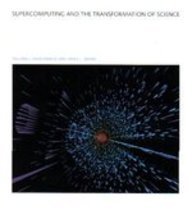Helpful Score: 2
This book is beautiful. The full colour illustrations are stunning. It is written in nontechnical language and on a level similar to a PBS NOVA special. While it explains things in plain English, it isn't dumbed down. The book is divided into 8 chapters:
1 - The Emergence of a Digital Science - explains the rise of computers, computing power, and the use of computers for simulation.
2 - The Evolution of Supercomputers - details the history of high power computing.
3 - The Methods of Supercomputing - explains how computers are used to model real-world situations.
4 - The Quantum World - makes sense of quantum states and subatomic particles and how these can be used in computing.
5 - Inside Living Creatures - explains the use of simulations to predict the shape of proteins, protein interaction, the spread of a virus, and other biological examples.
6 - Engineering and Design Analysis - provides even more examples of how computing has allowed for improvement in real-world applications, such as golf, construction, and food preparation.
7 - The Dynamic Planet - shows how computer models can predict climate change and the weather.
8 - Discovering the Universe - details the use of computers in astrophysics.
The book also includes a list for further reading and an index. Although the book was published many years ago (1993), I feel that it has held up well. People without technical expertise in these fields will find it to be an excellent introduction.
1 - The Emergence of a Digital Science - explains the rise of computers, computing power, and the use of computers for simulation.
2 - The Evolution of Supercomputers - details the history of high power computing.
3 - The Methods of Supercomputing - explains how computers are used to model real-world situations.
4 - The Quantum World - makes sense of quantum states and subatomic particles and how these can be used in computing.
5 - Inside Living Creatures - explains the use of simulations to predict the shape of proteins, protein interaction, the spread of a virus, and other biological examples.
6 - Engineering and Design Analysis - provides even more examples of how computing has allowed for improvement in real-world applications, such as golf, construction, and food preparation.
7 - The Dynamic Planet - shows how computer models can predict climate change and the weather.
8 - Discovering the Universe - details the use of computers in astrophysics.
The book also includes a list for further reading and an index. Although the book was published many years ago (1993), I feel that it has held up well. People without technical expertise in these fields will find it to be an excellent introduction.





